In 1975, the Men’s Technical Committee published a new version of the Code of Points. Below, you’ll find some of the updates, as well as the complete English text.
Happy gym nerding!
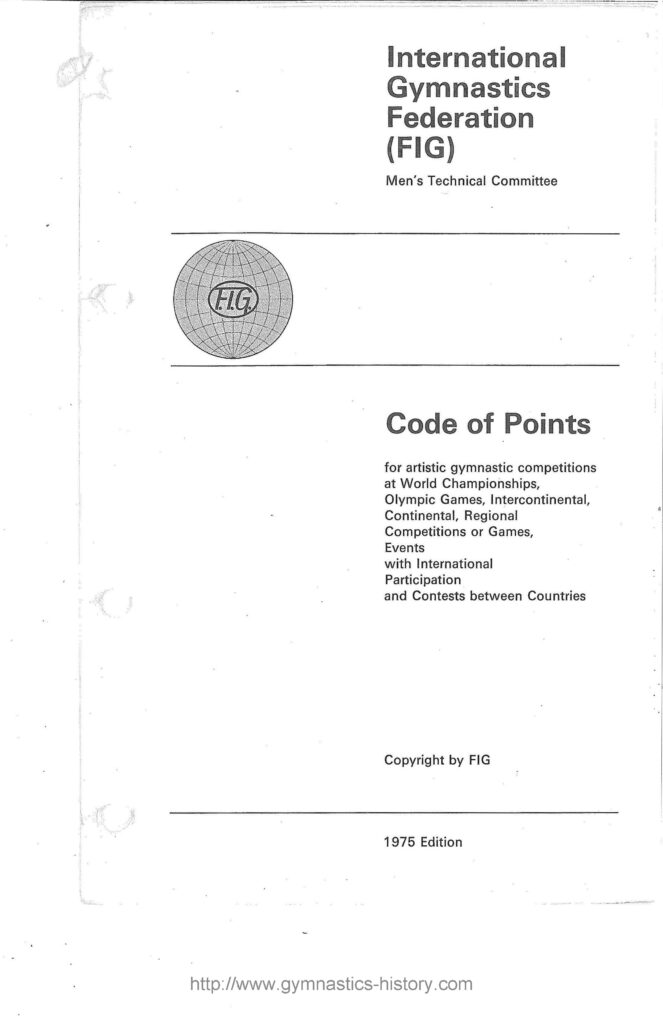
In 1975, the Men’s Technical Committee published a new version of the Code of Points. Below, you’ll find some of the updates, as well as the complete English text.
Happy gym nerding!

Pure gym nerdery. That’s what we have here.
In 1975, the FIG reprinted an article that analyzed three Tsukahara vaults by three gymnasts: Lyubov Bogdanova, Ludmilla Tourischeva, and Alina Goreac. It includes drawings and tables that compare every fraction of a second of their vaults.
Context: Keep in mind that, in 1973, when the aforementioned vaults were performed, Tsukaharas were relatively new. Tsukahara himself performed the vault at the 1970 World Championships. Two years later, at the Riga International, East German gymnast Beate Gehrke did one of the first Tsukaharas in women’s artistic gymnastics. By the 1974 World Championships, Tsukaharas had become commonplace in WAG.
Have fun looking at this document from the archives.
Batman and Robin.
Simon and Garfunkel.
Woody and Buzz Lightyear.
Abbott and Costello.
Bert and Ernie.
Nadia and Teodora.
Nadia Comăneci and Teodora Ungureanu form one of the most iconic duos in gymnastics history — partly because of video footage like this:
And photos like this one:
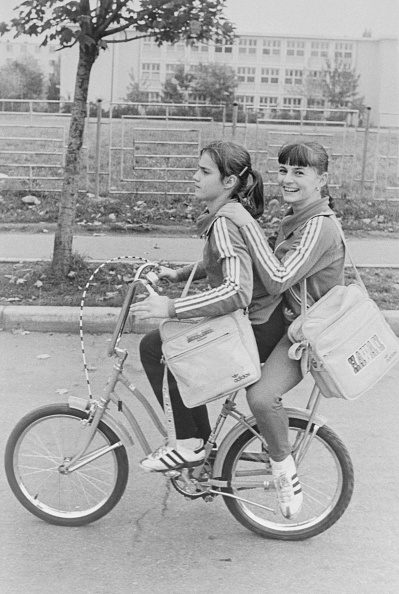
Did you know that, before their Olympic debut, the dynamic duo tied for the all-around title at the 1974 Romanian Junior Masters Championships? What follows are the results, as well as the newspaper coverage of the competition.
In the appendix, you can find a few articles on Comăneci and Ungureanu from the newspapers.
After the 1974 World Championships in Varna, Stanislav Tokarev, Sovetsky Sport’s special correspondent in Varna, took a step back and reflected on the trends in men’s and women’s artistic gymnastics. In so doing, he asked a question that the gymnastics community continues to ask itself 50 years later: Should participation at major competitions be limited to only the best of the best?
Tokarev rejoiced in seeing up-and-coming gymnastics programs participate in Varna, and he criticized the FIG’s qualification process for the 1976 Olympics, which would limit the number of teams in Montréal.
Here’s a translation of his column.
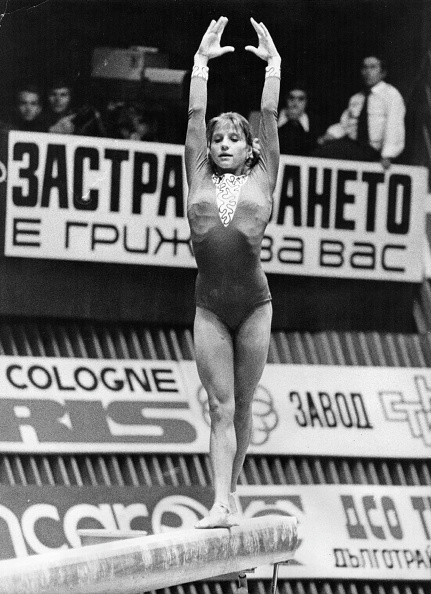
For over three decades Czechoslovakia was a powerhouse in the world of women’s artistic gymnastics. From 1936 until 1968, Czechoslovak women’s artistic gymnasts always won at least one medal at the Olympics, and, except for 1950, from 1934 to 1970, they won at least one medal at the World Championships. (Czechoslovakia did not attend the 1950 World Championships.)
In 1972, that streak ended. No Czechoslovak gymnast won a medal in Munich, which led to much soul-searching.
Two years later, at the 1974 World Championships, the winds of fortune changed, and Czechoslovakia was on the podium once again. Božena Perdykulová, a newcomer to the international stage, came to Varna with an impressive Tsukahara and won a bronze medal.
Because Perdykulová is relatively unknown to English-speaking gymnastics fans, I translated two articles about her, as well as an article about the place where she trained.
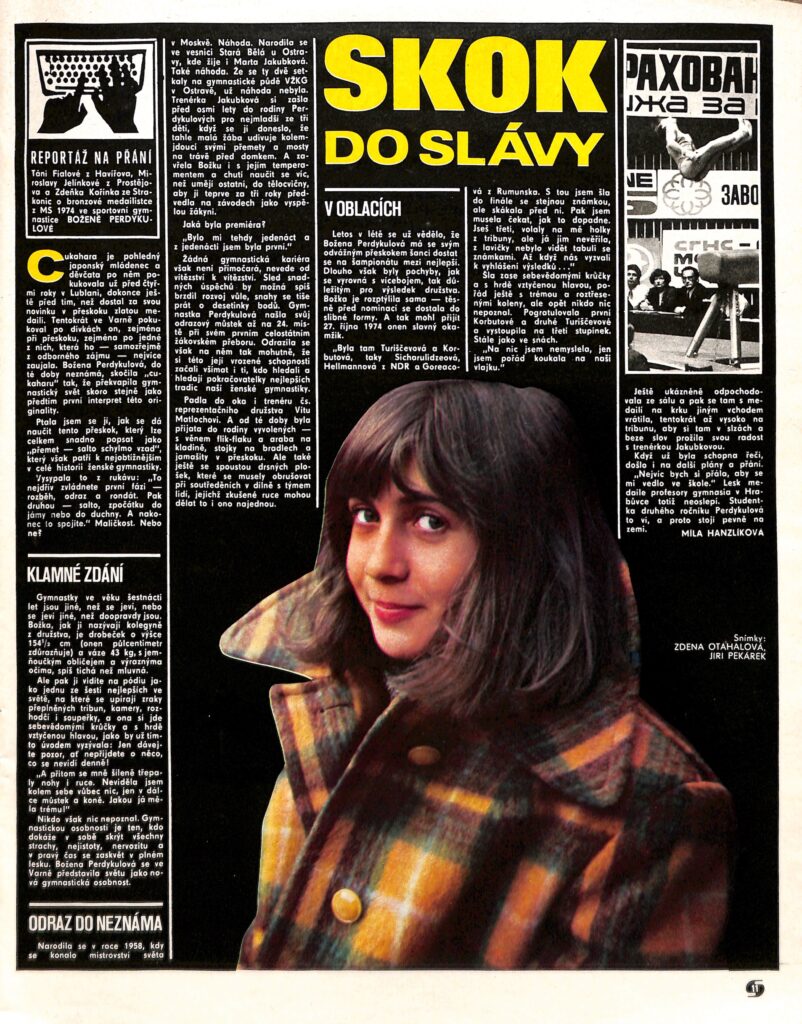
What did the leaders of the FIG think about the 1974 World Championships?
For starters, none of them was thrilled about having to move the location of the competition. As you’ll see, both presidents of the technical committees and the president of the FIG mentioned the challenge of choosing a host for the 1974 World Championships. (More on that decision here.)
Valerie Nagy, the president of the Women’s Technical Committee, was generally displeased with the level of the gymnasts, writing: “Even without preliminary qualifications, the national federations should have been more severe when making their selections.”
In addition, she didn’t like the direction of balance beam, where she felt that gymnasts were trying to perform too many difficult acrobatic elements, which impacted the flow of the routine.
In that same vein, Arthur Gander, the president of the FIG, railed against the emphasis on risk and difficulty at the expense of execution.
Below, you can find Gander’s comments, as well as those of the MTC and the WTC.
My thought bubble: Yup, this is pretty nerdy stuff, but most people who read this site are pretty nerdy people. 🙂
A little trivia: Did you know that there were three score protests during the men’s competition? Guess how many of those protests were rejected.
The Japanese men were unable to dominate on the final day of competition in Varna — in part because Kasamatsu withdrew from several events.
As clear as the Japanese won team and individual victories, they could not assume this dominant role in the apparatus final, especially as Kasamatsu had to forego competing on rings, parallel bars, and high bar due to a shoulder injury.
Neues Deutsches Turnen, No. 12, 1974
So klar die Japaner Mannschafts-und Einzelsieg erkämpften — im Gerätefinale konnten sie diese dominierende Rolle nicht spielen, zumal Kasamatsu an den Ringen, am Barren und am Reck wegen einer Schulterverletzung auf den Start verzichten mußte.
Six different gymnasts won gold medals, representing five different countries (Japan, the Soviet Union, Hungary, Romania, and West Germany).
Below, you’ll find snippets of newspaper reports, as well as videos from the 1974 men’s event finals, which took place on Sunday, October 27.
Enjoy!
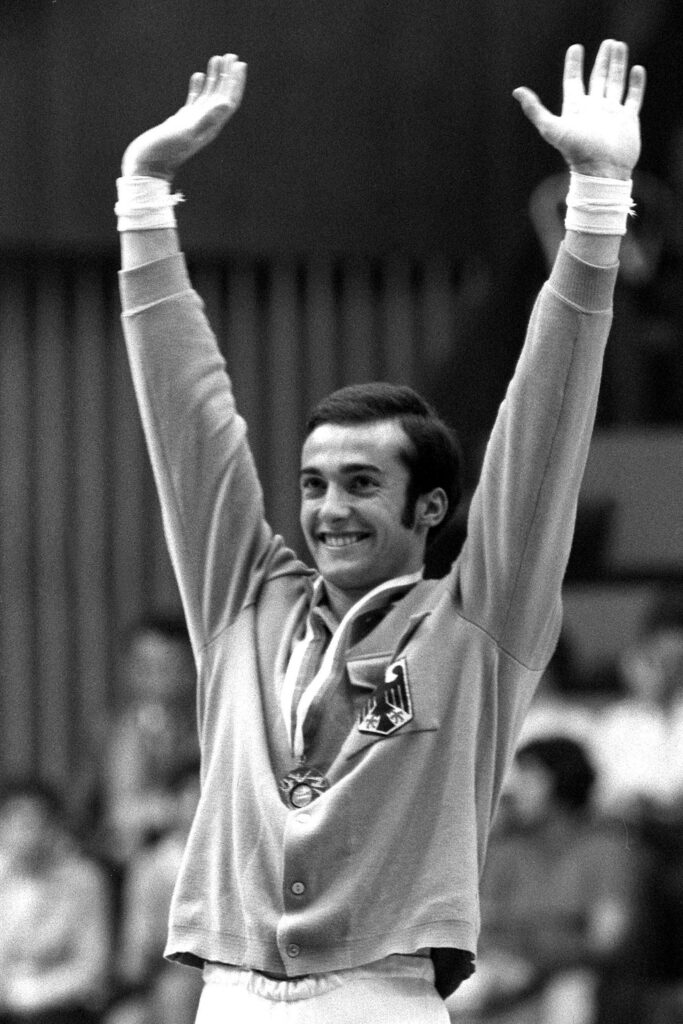
Context: At the 1972 Olympics, only three countries (the Soviet Union, East Germany, and Hungary) were represented in the women’s event finals, and only two countries won medals (the Soviet Union and East Germany).
At the 1974 World Championships, five countries (the Soviet Union, East Germany, Czechoslovakia, Romania, and Hungary) were represented during the women’s event finals, and three countries won medals (the Soviet Union, East Germany, and Czechoslovakia).
Though there was slightly more diversity in 1974, some things did not change. Just as the uneven bars final was highly contentious in Munich, so, too, was the uneven bars final in Varna. Olga Korbut went as far as to say that the results were predetermined.
Here’s what happened on Sunday, October 27, 1974.
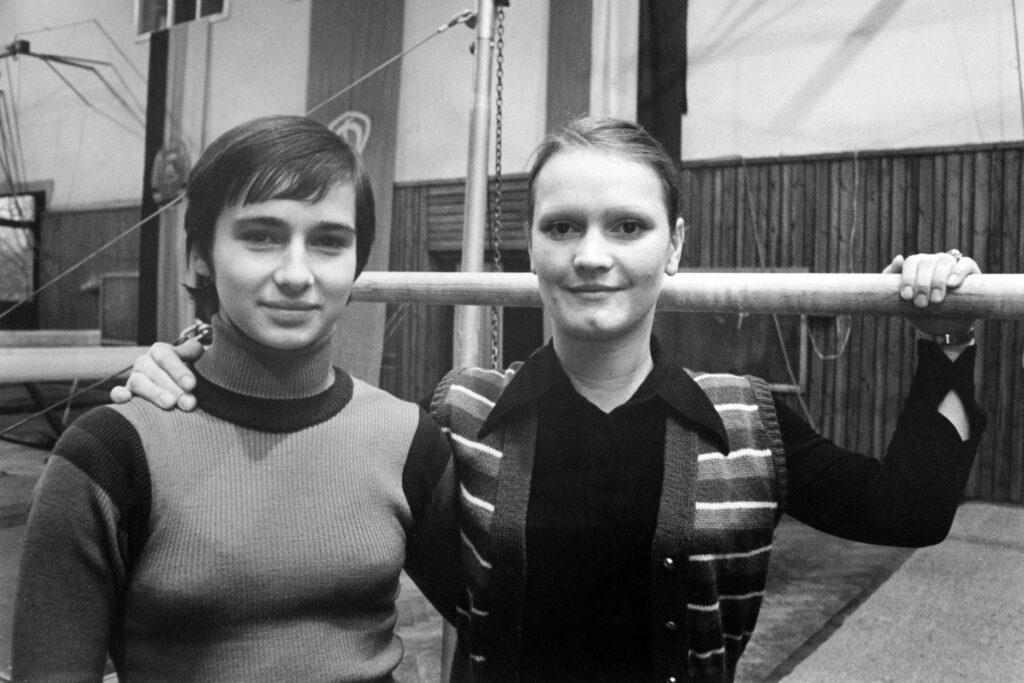
In 1974, Kasamatsu Shigeru became only the second Japanese gymnast to win the all-around title at the World Championships. (Kenmotsu won it in 1970.) However, his win was not without controversy. With only 0.125 separating Kasamatsu and Andrianov, some thought that Kasamatsu should have won while others thought that Andrianov should have won.
As we’ll see, much of the coverage focused on what happened during the last rotation on October 26, 1974.
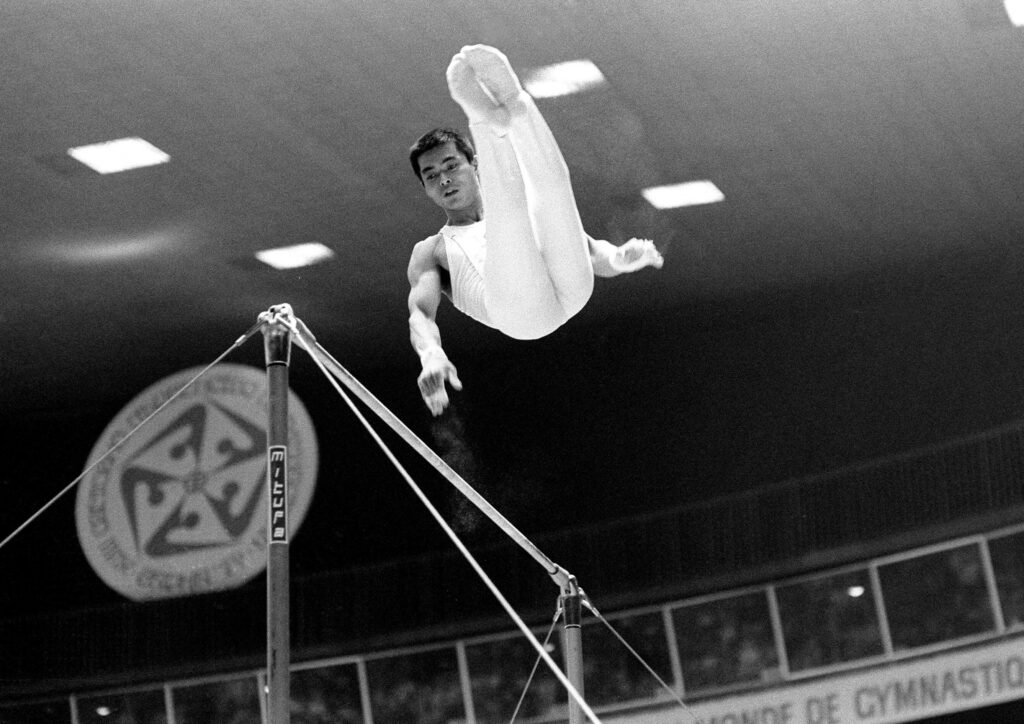
Reminder: This was the first World Championships with an all-around final. (The Munich Olympics were the first Olympic Games to include an all-around final.)
In 1974, Ludmilla Tourischeva won her second-straight all-around title at the World Championships and proved what some, including head coach Larisa Latynina, believed to be true: Tourischeva would always trump Korbut in the all-around.
One month before the World Championships, the Soviet magazine Yunost published an article about Tourischeva and Korbut. Here’s an excerpt:
“Can Korbut finally win against Tourischeva?” they ask.
My answer is: “No, she can’t.”
On one apparatus – sure she can. On two. On three. But not in the big all-around with twelve apparatus (three times four), where the main title of the all-around champion is at stake.
Latynina once put it well into words: “Korbut will surprise, but Tourischeva will win.”
You have to be Tourischeva — steel in work, deaf to the temptations of the world, unquestioningly submissive to her own will as well as her coach’s. Tourischeva is a stayer, she possesses an ideally patient and stubborn all-around character.
And Olya Korbut is a person-explosion, a person of moods. Imagine a sprinter running ten thousand meters — this is Korbut in the all-around.
Stanislav Tokarev, Yunost, September, No. 9, 1974
That said, Korbut, among others, felt that the judges had crowned Tourischeva as the champion even before the competition in Varna began.
Interestingly, the highest score in the competition did not go to either Tourischeva or Korbut. Instead, it went to Annelore Zinke, who scored a 9.95 on bars.
Note: Since there were four judges for each event with the high and low scores being dropped, this meant that two judges gave Zinke a 10.0 for her routine. One 10.0 was dropped, and her counting scores were a 9.90 and a 10.0 for a 9.95 average.
Here’s what happened on Friday, October 25 during the women’s all-around final.
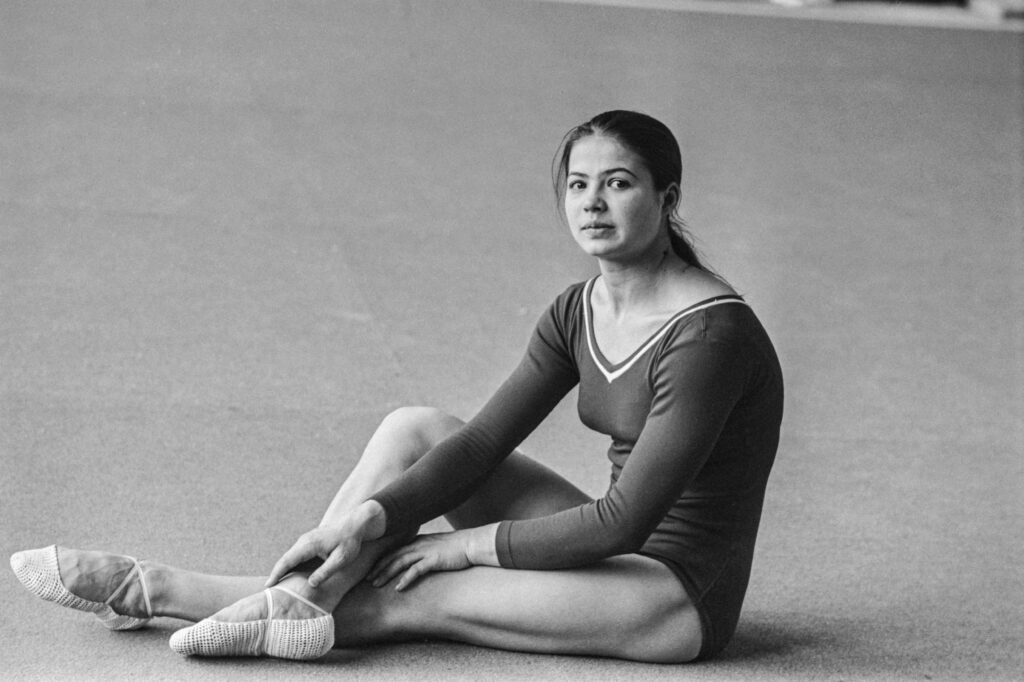

Reminder: This was the first World Championships with an all-around final. (The Munich Olympics were the first Olympic Games to include an all-around final.)
Reminder #2: In 1973, the Women’s Technical Committee tried to ban Korbut’s skills.